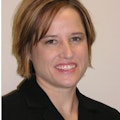‘Daily rate’ pay for hygienists: What could be wrong with that?
How many of you pay your hygienists using a “daily rate”? Odds are a lot of you. The concept of paying someone a flat rate for “a day’s worth of work” seems like a good one. It’s certainly easy. You don’t have to track an employee’s hours and do math to determine someone’s pay. If employees show up and see six to eight patients, they receive their daily rate. Boom! Done!
You know that saying, “If it’s too good to be true, it probably is”? That is absolutely the case with daily rate pay programs. It is a myth in the dental industry that a daily rate covers it all, reduces problems, and even makes payroll easier.
Hygienists, in all but the rarest of situations, are nonexempt employees. This article isn’t about the nuances of exempt versus nonexempt, so we won’t explore these here. Suffice it to say, hygienists rarely meet the legal criteria for exempt classification and therefore must be classified as nonexempt. As nonexempt employees, they must be paid for all hours that they work. This is true regardless of how they are paid—whether hourly, salary, or daily rate.
This is where dentists run into trouble with daily rate pay. It is common to believe that “a day’s worth of work” can be any number of hours and all those hours will be covered by the daily rate. This is not true. The daily rate must be defined and, if the employee works more, the employee must be paid more.
For example, you may have a daily rate of $400 for eight hours of work. If the hygienist works nine hours, his or her daily rate must be increased due to that one extra hour of work that is not covered by the daily rate.
As you can see, clearly defining the number of hours the daily rate covers is critical. This should be done in writing. If you reside in a state in which there is no daily overtime law, the rate can cover more than eight hours in a day but must be closely tied to the hours the employee will actually work. In other words, you can’t say it covers 10 hours if the employee regularly works eight hours.
Another misconception is that daily rate pay means eliminating the burden of tracking employee hours. Under both federal and state laws, employers must record the hours worked by nonexempt employees. The method of compensation does not eliminate this requirement. Therefore, even with daily rate pay, hygienists must track their hours.
Nonexempt employees are eligible for overtime. Under federal law, overtime must be paid when an employee works more than 40 hours in a week. Overtime will also be required when an employee works more than a certain number of hours in a day per state laws (if applicable). For example, California requires overtime for anyone who works more than eight hours in a day.
What does this mean for the daily rate of pay for employees? It means their pay must be increased when overtime is worked. Overtime pay is time and one-half. Thus, an individual with a daily rate of $400 for eight hours of pay would earn $475 for a day in which one hour of daily overtime is worked ($400/8 hrs. = $50/hr.; 1.5 x $50 = $75).
While you are required to increase pay when employees work more, you are not required to pay a full daily rate when employees work less. Thus, if an employee’s daily rate is defined as eight hours of work and the person works only four hours, the daily rate can be reduced to reflect the shortage of hours. If you plan on doing this, be sure this is clearly outlined in writing to prevent any misunderstandings.
Ultimately, all of this begs the following question: why bother with daily rate pay? It fails to accomplish what it is intended to do. In fact, one could argue that using a daily rate of pay, once you know the rules and comply with them, only make things more complicated. For nonexempt employees, nothing is more straightforward than hourly pay. Daily rate has been misconstrued to be something that it is not, and all dentists would be well advised to revisit their pay practices going forward.
TIM TWIGG is the president of Bent Ericksen & Associates and REBECCA BOARTFIELD is a human resources compliance consultant. For more than 30 years, the company has been a leading authority in human resources and personnel issues, helping dentists successfully deal with ever-changing and complex labor laws. To receive a complimentary copy of the company’s quarterly newsletter or to learn more, call (800) 679-2760 or visit bentericksen.com.
About the Author

Rebecca Boartfield, SHRM-SCP
Rebecca Boartfield, SHRM-SCP, is an HR compliance consultant for Bent Ericksen & Associates. For more than 40 years, the company has been a leading authority in human resources and personnel issues, helping dentists successfully deal with ever-changing and complex labor laws. To learn more, call (800) 679-2760 or visit bentericksen.com.
